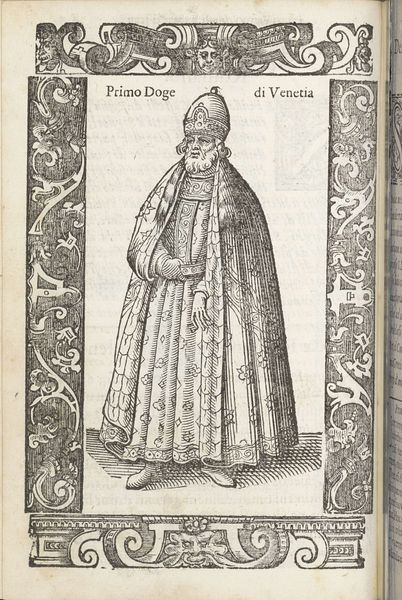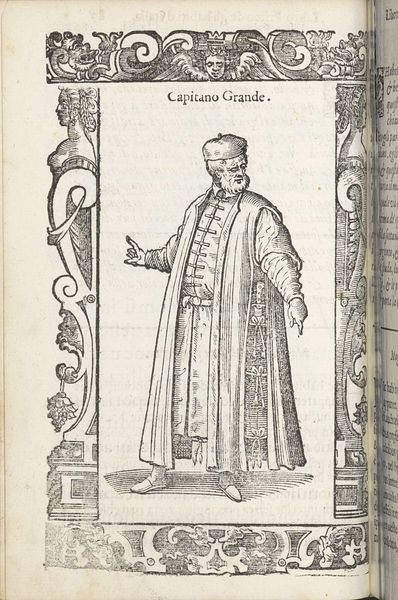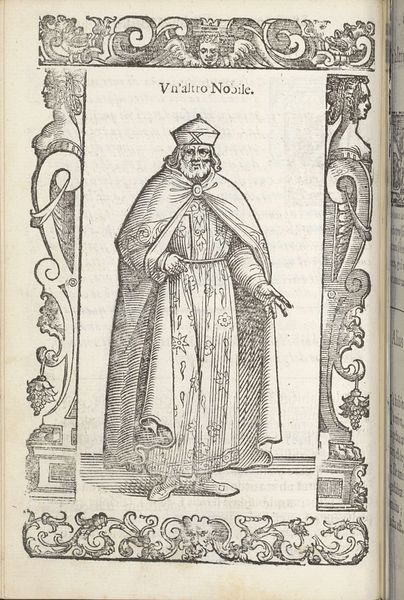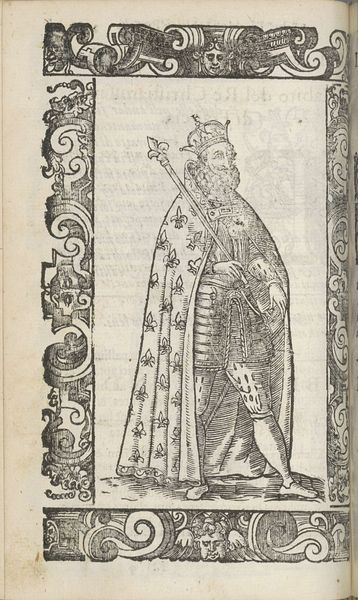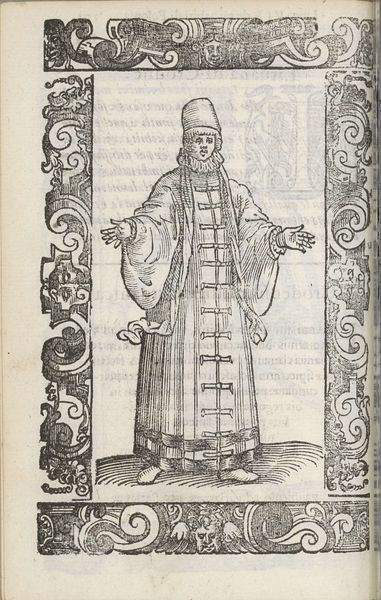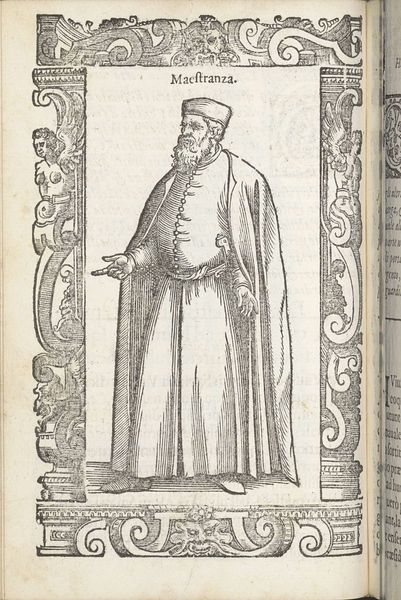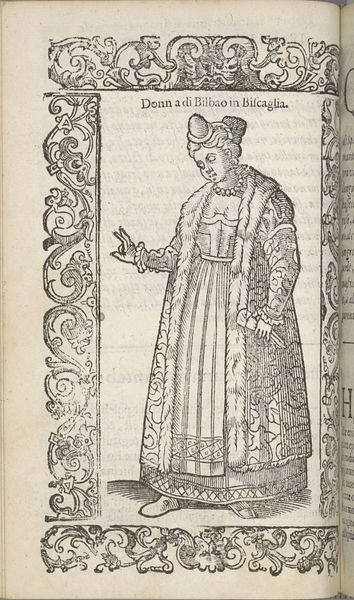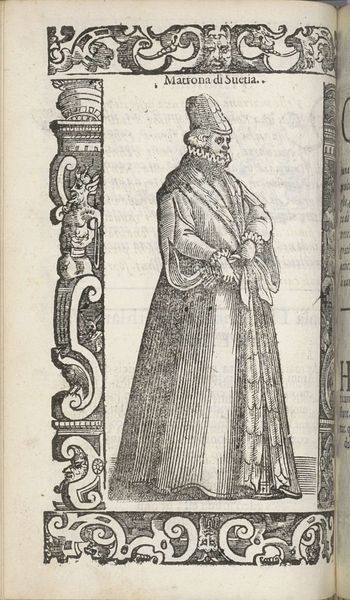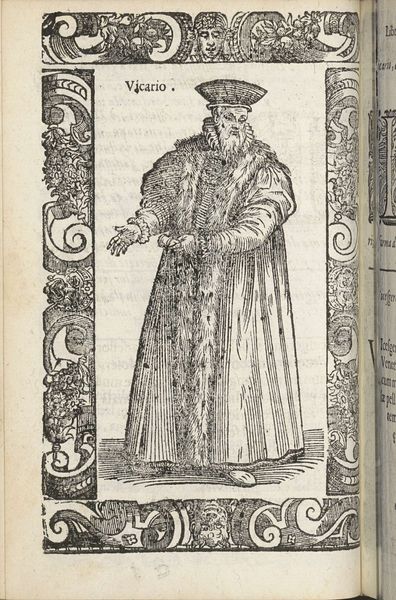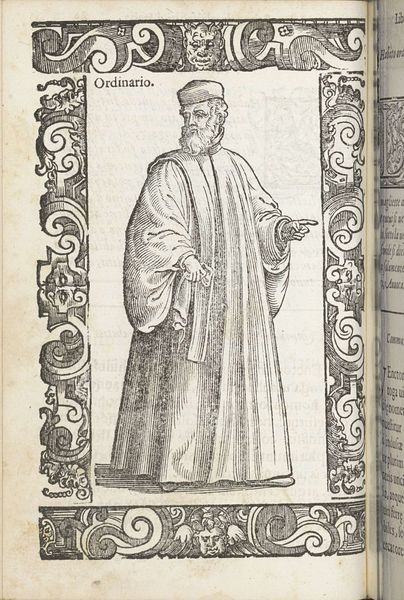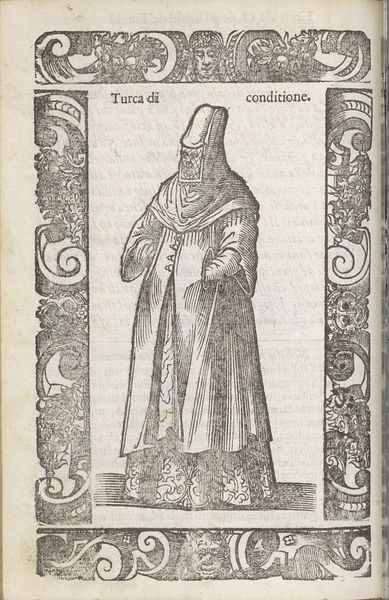
Leaf from Habiti antichi e moderni, plate 92 from Woodcuts from Books of the XVI Century c. 1598 - 1937
0:00
0:00
drawing, print, paper, woodcut, engraving
#
portrait
#
drawing
# print
#
paper
#
11_renaissance
#
woodcut
#
engraving
Dimensions: 152 × 96 mm (image); 180 × 119 mm (sheet)
Copyright: Public Domain
Curator: Let’s examine this striking print titled "Leaf from Habiti antichi e moderni, plate 92 from Woodcuts from Books of the XVI Century," created by Cesare Vecellio, sometime between 1598 and 1937. It's currently held here at The Art Institute of Chicago. Editor: My immediate impression is one of formal power. The figure, presumably a ruler given the title Imperatore inscribed above him, exudes authority. The severe lines of the woodcut, combined with the elaborate framing, reinforce that sense of imposing regality. Curator: Vecellio, who was Titian’s cousin, made his mark documenting costumes and fashions of his time, and it shows. Consider the incredible detail in the Imperatore's robes and headwear – each line carefully placed to define texture and status. This wasn't just about recording clothing, but signalling social standing within Venetian society and its connections abroad. Editor: The globe held in his hand and the scepter further cement his dominance; it's a visual representation of world power underpinned by religious iconography with the cross atop the orb. What do you make of the cherubic figures adorning the frame? Curator: Good eye. They introduce an interesting counterpoint. On one level, they serve as classical decorative elements that would’ve been stylish within secular portraiture, linking to larger political systems claiming divine approval. Simultaneously, though, in a time of political and religious reform, using putti this way walks a fine line with the ever looming criticisms levied during the reformation period. Editor: Yes, the composition speaks volumes beyond the subject himself, especially when framed within that context. It makes you consider how intentional placement reinforces cultural messaging. It is not simply an individual portrayed but a projection of values and expectations of leadership through symbolic and representational weight of power. Curator: Exactly. Vecellio provides a portrait caught in time, but what history has shown us in this artwork it shows the relationship with its subjects, society and its patrons makes the most profound legacy of art that extends well beyond the sixteenth century. Editor: It reminds us how even seemingly straightforward portraiture can reveal much about the era it came from and how visual languages persist.
Comments
No comments
Be the first to comment and join the conversation on the ultimate creative platform.
